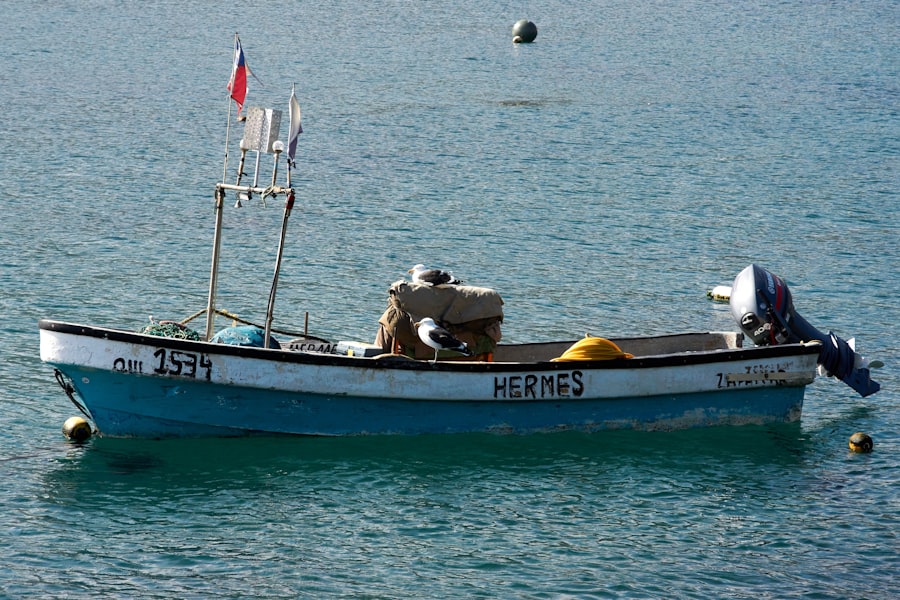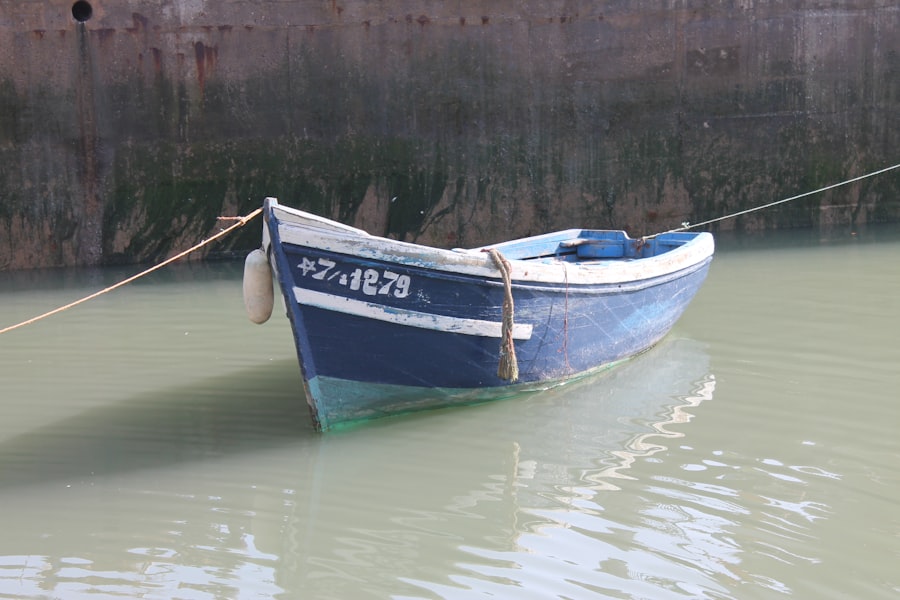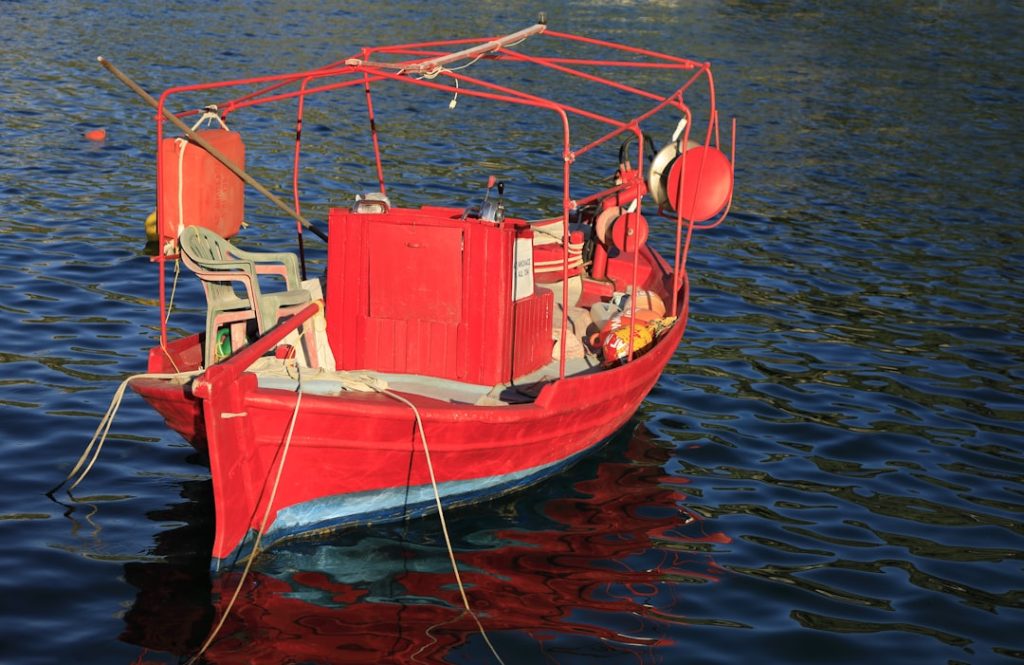When embarking on the journey to purchase a fishing boat, the first step is to clearly define your fishing needs. This involves considering the type of fishing you plan to engage in, whether it be freshwater or saltwater, inshore or offshore, and the species you aim to catch. For instance, if you are primarily interested in bass fishing in lakes, a smaller, more maneuverable boat may be ideal.
Conversely, if your goal is to venture into the open ocean for deep-sea fishing, a larger vessel equipped to handle rough waters will be necessary. Understanding these nuances will help you narrow down your options and ensure that the boat you choose aligns with your fishing aspirations. Additionally, it is crucial to consider how often you plan to fish and whether you will be fishing alone or with a group.
If you frequently fish with family or friends, a boat with ample seating and space for multiple passengers will enhance the experience. On the other hand, if you prefer solitude or are just starting out, a smaller craft may suffice. Furthermore, think about the conditions in which you will be fishing.
Will you be navigating through narrow rivers, open lakes, or coastal waters? Each environment presents unique challenges and requirements that should influence your decision-making process.
Key Takeaways
- Identify your specific fishing needs to choose the right boat type.
- Consider size, capacity, and fishing features to match your fishing style.
- Evaluate fuel efficiency and range for longer trips and cost savings.
- Assess comfort, amenities, and maintenance to ensure convenience and durability.
- Set a realistic budget and explore financing options before making a purchase.
Researching Different Boat Types
Once you have a clear understanding of your fishing needs, the next step is to research the various types of boats available on the market. Fishing boats come in a multitude of designs, each tailored for specific environments and fishing styles. For example, aluminum boats are lightweight and durable, making them an excellent choice for freshwater fishing in lakes and rivers.
They are also relatively easy to transport and launch, which is a significant advantage for anglers who frequently change locations. In contrast, fiberglass boats offer a smoother ride and are often preferred for saltwater fishing due to their resistance to corrosion. These boats can be found in various sizes and configurations, from center consoles designed for offshore excursions to cabin cruisers that provide shelter and comfort during extended trips.
Additionally, inflatable boats have gained popularity for their portability and ease of storage, making them suitable for casual anglers or those with limited space. Each type of boat has its own set of advantages and disadvantages, so thorough research is essential to find the best fit for your specific fishing style.
Considering Size and Capacity

The size of the boat is another critical factor that should not be overlooked. The dimensions of the vessel will directly impact its performance on the water as well as its capacity to accommodate passengers and gear. A larger boat typically offers more stability and can handle rougher waters, which is particularly important for offshore fishing.
However, larger vessels can also be more challenging to maneuver and may require more effort to launch and retrieve. Capacity is equally important; it refers not only to the number of people the boat can safely carry but also to the amount of gear and equipment it can accommodate. For instance, if you plan on bringing along fishing gear, coolers, and other supplies, ensure that the boat has sufficient storage space.
Additionally, consider the weight capacity of the boat; exceeding this limit can compromise safety and performance. It’s advisable to consult manufacturer specifications and seek advice from experienced anglers when determining the appropriate size and capacity for your needs.
Evaluating Fishing Equipment and Features
| Equipment | Durability | Weight | Material | Line Capacity (yards) | Price Range | Special Features |
|---|---|---|---|---|---|---|
| Spinning Rod | High | Light | Carbon Fiber | 150 | Moderate | Flexible tip, corrosion resistant guides |
| Baitcasting Reel | Very High | Medium | Aluminum Alloy | 120 | High | Adjustable drag, smooth casting system |
| Fishing Line (Monofilament) | Medium | Light | Nylon | 200 | Low | Stretchable, easy knotting |
| Fishing Line (Braided) | High | Light | Polyethylene Fibers | 150 | Moderate | High strength, low stretch |
| Fishing Lure | Medium | Light | Plastic/Metal | N/A | Low to Moderate | Realistic movement, reflective surface |
| Fishing Net | High | Heavy | Mesh/Nylon | N/A | Moderate | Collapsible frame, knotless mesh |
When selecting a fishing boat, evaluating the equipment and features it offers is paramount. Many modern fishing boats come equipped with specialized features designed to enhance the angling experience. For example, built-in rod holders allow for hands-free fishing while trolling, while live wells keep bait fresh and lively throughout your outing.
Additionally, some boats include fish finders or GPS systems that can significantly improve your chances of locating fish. Another important feature to consider is the layout of the boat’s deck. A spacious deck allows for easy movement while casting lines or reeling in catches.
Some boats also offer customizable options such as removable seating or additional storage compartments tailored to your specific needs. Furthermore, consider whether the boat has adequate safety features such as non-slip surfaces and railings that can provide peace of mind while navigating potentially hazardous waters.
Examining Fuel Efficiency and Range
Fuel efficiency is a critical consideration when purchasing a fishing boat, as it directly affects operating costs and overall enjoyment on the water. Boats equipped with fuel-efficient engines can save you money over time, especially if you plan on spending long hours fishing or traveling significant distances to reach your favorite spots. Outboard motors are often favored for their efficiency and ease of maintenance; however, inboard engines may offer better performance in certain conditions.
Range is another aspect closely tied to fuel efficiency. It refers to how far you can travel on a single tank of fuel before needing to refuel. If you plan on venturing far offshore or exploring remote fishing locations, a boat with a larger fuel tank or better fuel economy will allow you to fish longer without worrying about running out of gas.
Researching engine specifications and consulting with fellow anglers can provide valuable insights into which models offer the best balance of power and efficiency.
Assessing Comfort and Amenities

Comfort should not be underestimated when selecting a fishing boat; after all, long days on the water can become tedious without adequate amenities. Features such as comfortable seating, shade options like bimini tops, and even small cabins can significantly enhance your experience. If you plan on spending extended periods on your boat, consider models that offer additional comforts such as built-in coolers for refreshments or even small kitchens for preparing meals.
Moreover, think about how easy it is to access different areas of the boat while fishing. A well-designed layout allows for smooth movement between seating areas, storage compartments, and fishing spots without feeling cramped or restricted. Some boats even come equipped with bathrooms or changing areas, which can be particularly beneficial for family outings or longer trips where convenience becomes essential.
Comparing Maintenance and Storage Requirements
Maintenance is an often-overlooked aspect of boat ownership that can have significant implications for long-term satisfaction. Different types of boats come with varying maintenance needs; for instance, fiberglass boats may require regular polishing to maintain their appearance while aluminum boats might need periodic checks for corrosion. Understanding these requirements upfront can help you gauge how much time and effort you are willing to invest in upkeep.
Storage is another critical consideration that can influence your choice of boat. Depending on where you live, storing a boat can range from simple driveway parking to requiring specialized storage facilities. Smaller boats may be easier to store at home or in a garage, while larger vessels might necessitate renting a slip at a marina or finding a dedicated storage unit.
Additionally, consider whether you will need a trailer for transport; this adds another layer of complexity regarding storage space and maintenance.
Setting a Budget and Financing Options
Finally, setting a budget is an essential step in the process of purchasing a fishing boat. The cost of boats can vary widely based on size, type, brand, and features; therefore, having a clear budget will help narrow down your options effectively. It’s important to account not only for the initial purchase price but also for ongoing costs such as insurance, fuel, maintenance, and storage fees.
Exploring financing options can also provide flexibility in managing your budget. Many dealerships offer financing plans that allow buyers to spread payments over time rather than paying upfront costs entirely out of pocket. Additionally, some financial institutions specialize in loans specifically for recreational vehicles like boats; researching these options can help you find favorable terms that suit your financial situation.
By carefully considering your budget and financing options, you can make an informed decision that aligns with both your financial goals and your passion for fishing.


